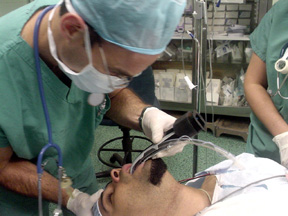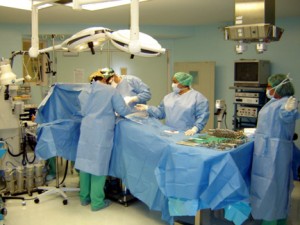The Department of Anesthesiology’s four year educational program is designed to train you as a consultant in anesthesiology and prepare you for the challenges of a life-long career in this exciting field. Our goal is to educate superior anesthesiologists able to handle any clinical situation competently and confidently.
The clinical base year (CBY or PGY-1) provides a broad foundation of medical knowledge and clinical experience upon which subsequent training builds. This is definitely a challenging and rewarding first year.
Clinical Base Year (CBY)
Anesthesia: 1 month
Emergency Medicine: 1 month
Family Medicine: 1 month
General Surgery: 1 month
Internal Medicine: 1 month
Medical Intensive Care Unit (MICU): 1 month
Obstetrics/Gynecology: 1 month
Otorhinolaryngology (ENT): 1 month
Pediatrics: 1 month
Trauma Stabilization Unit: 1 month
Trauma Intensive Care Unit (TICU): 1 month
Vacations: 1 month


The Clinical Anesthesiology program encompasses the CA-1 through CA-3 (PGY-2 through PGY-4) years. The CA-1 year begins with the Introduction to Anesthesiology Curriculum, a combination of closely supervised clinical training, academic and practical instruction sessions designed to rapidly introduce you to the fundamentals of safe patient care. Goals and objectives are clearly defined, and individual resident progress is closely monitored. As your competence and confidence grow you will function with greater independence and care for increasingly complex patients. Midway through the CA-1 year you will begin subspecialty rotations, working closely with faculty members extensively trained and experienced in their subspecialty area. The CA-2 year builds technical expertise, clinical judgment, decision-making skills and confidence.
The CA-3 year offers great flexibility in its goal of providing residents with extensive experience caring for the most critically ill patients. Advanced rotations are available throughout the spectrum of subspecialties, with experience gained in such broad ranging areas as operating room management and techniques of transesophageal echocardiography and neuro-monitoring. A six-month research track is available for residents considering careers in scientific research.
The program strictly follows the ACGME Anesthesiology Residency Review Committee program requirements.

